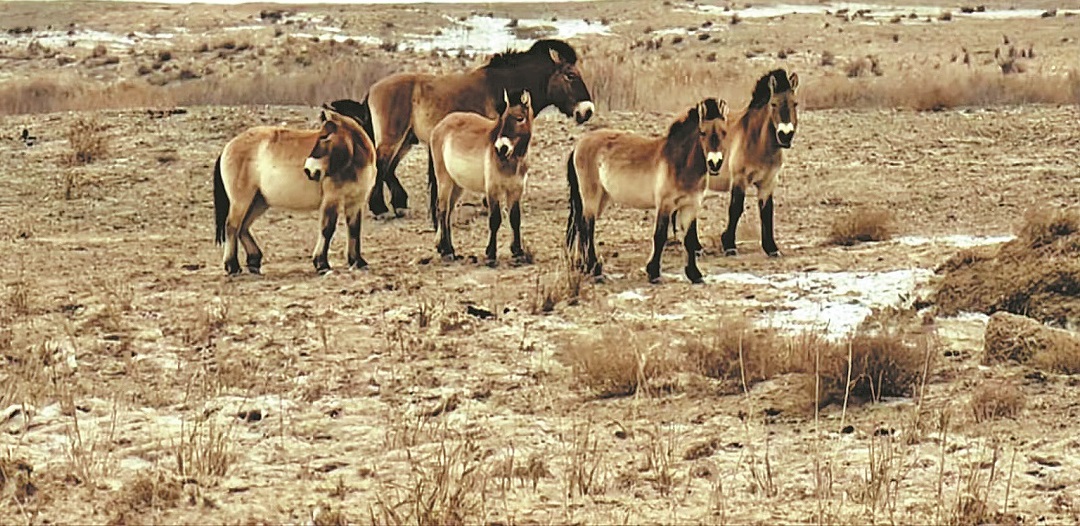Band of brothers battles solitude, wind, searing sun to transform desert
Dedicated rangers in Gansu nature reserve work hard to revive life, ecology


Every year between October and November, the poplar forests in the Dunhuang Xihu Nature Reserve, Gansu province, come alive in a blaze of vibrant, shimmering yellow. Golden shafts of sunlight pour into the cave dwelling of ranger Lu Shengrong, when the door swings open during the day.
Outside, the desert stretches endlessly, its sands tinted a darker shade by mineral-rich gravel — iron and manganese oxides — weathered by wind and sun over the years.
"These are the forces that have shaped both the land and the lives within it, including mine," said Lu.
For the past four years, the cave standing in the reserve's northwestern reaches has served as both his workplace and home. It was carved from a towering, wall-like landform which has been shaped by the relentless sculpting force of the desert wind.
Known as Yardang, or Yadan, these striking formations are a geological hallmark of Dunhuang — an ancient oasis town and important stop along the Silk Road, which once linked China to Central Asia and beyond.
The opening of that great land route in the 2nd century BC sparked waves of migration and land reclamation that ebbed and flowed for two millenniums. Though the desert was always present, the 18th century saw its rapid expansion. Wetlands vanished as migration and overcultivation depleted water resources, allowing the desert's creeping advance.
"What we have done to nature, we must now make right," Lu said, pointing out that Xihu, or West Lake, serves as a reminder of a time when water-rich landscapes stretched across the vast region west of Dunhuang.
"Today, within our 6,600-square-kilometer reserve, approximately 970 sq km are wetlands. This is why the reserve is considered the last natural barrier against the encroaching desert — safeguarding not only the surrounding ecosystem, but also the world-renowned Mogao Grottoes, located about 145 km to the east," he said.























